30 Design Strategies and Tactics from 40 Years of Investigation
Appendix: Further information and examples
Modeling exams with advance background reading
How non-routine is non-routine? The difficulty of a task is strongly related to its unfamiliarity – how different is it from tasks one has met and solved. This difference is sometimes called 'transfer distance'. Clearly, it depends on the student's prior experience, in the classroom and in life outside, of various types of problem situation and approaches to tackling them. This is true of all assessment tasks but particularly those where context is important, as with modelling real world situations with mathematics.
One way to control the transfer distance between situations that the student has met and thought about and those presented as assessment tasks is by giving advance background reading. This approach has been developed and refined by Geoffrey Wake in designing the AQA Use of Mathematics examination for 17-18 year old students. Students received a booklet to study 2 months ahead of the exam – a clean copy of which was also provided during the exam session, so it was not a case of ‘memorise this booklet’.
Example: Half Full or Half Empty (AQA ‘Use of Mathematics’ pilot June 2010)
Students received 3 pages of advanced reading about the historical background of the need for accurate calculations of the volume of vessels of different shapes and Johannes Kepler's pioneering work to this end. The material focused on ways of estimating and calculating the volume of cones pre- and post- the development of calculus.
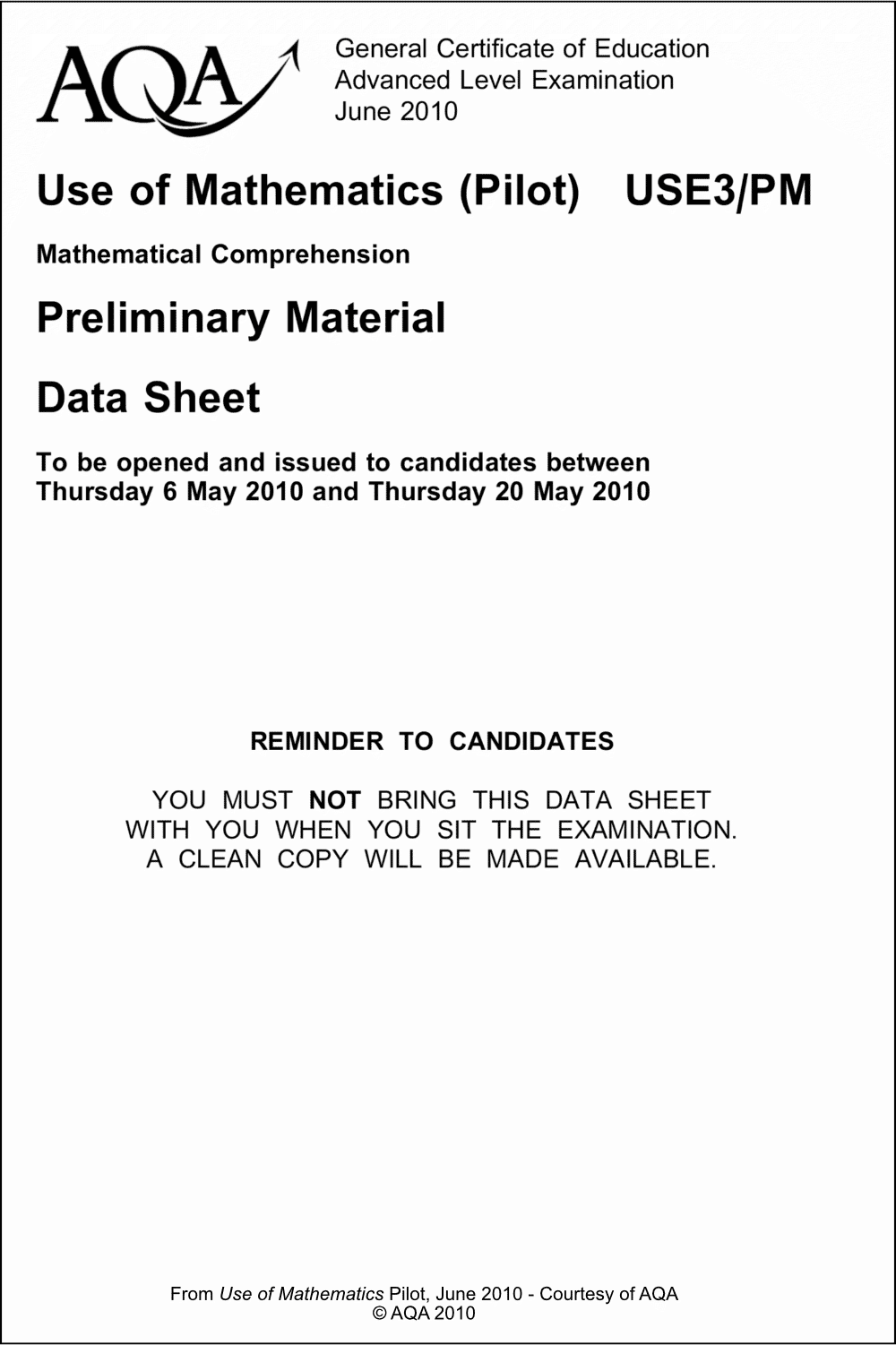
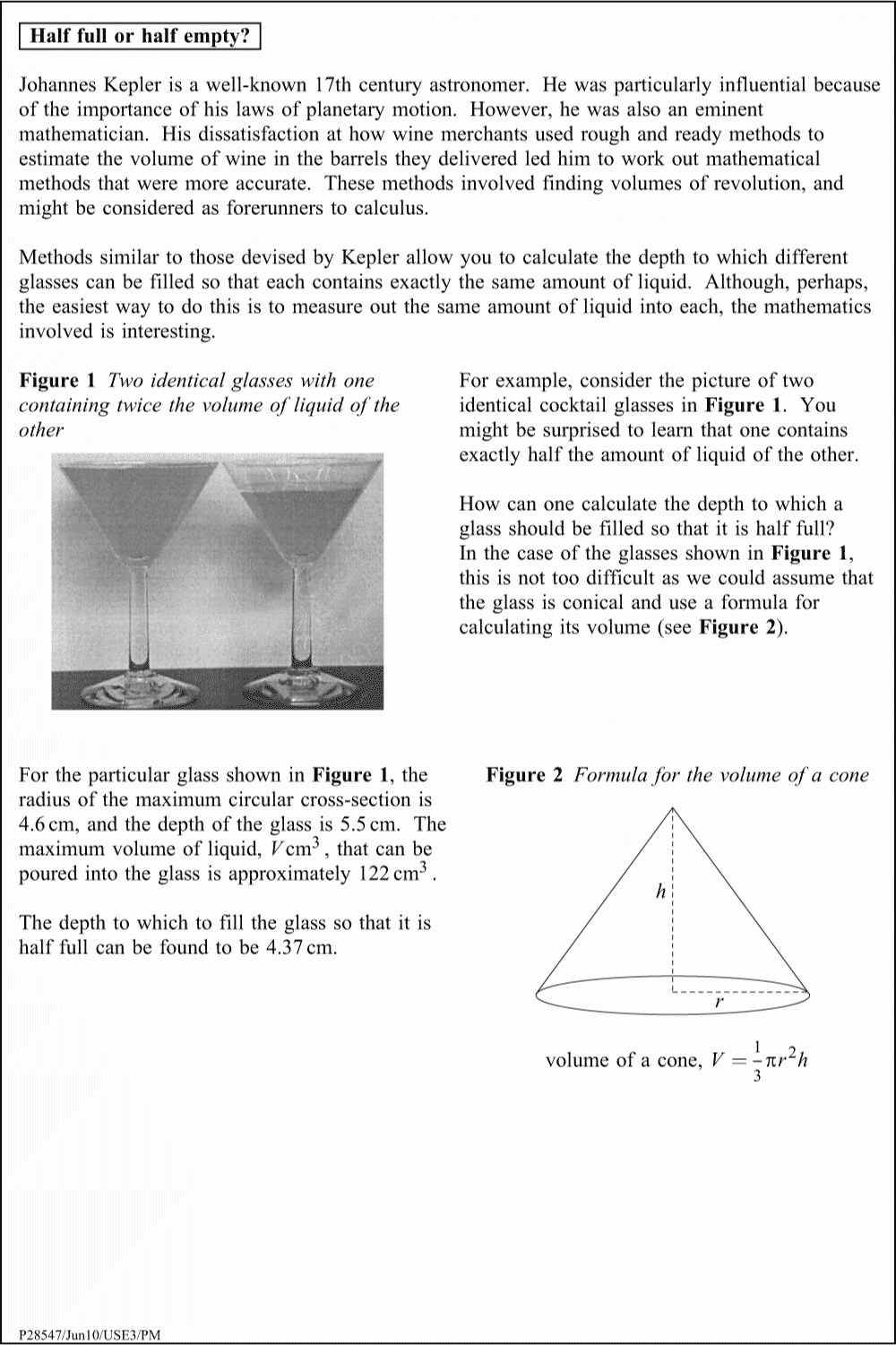
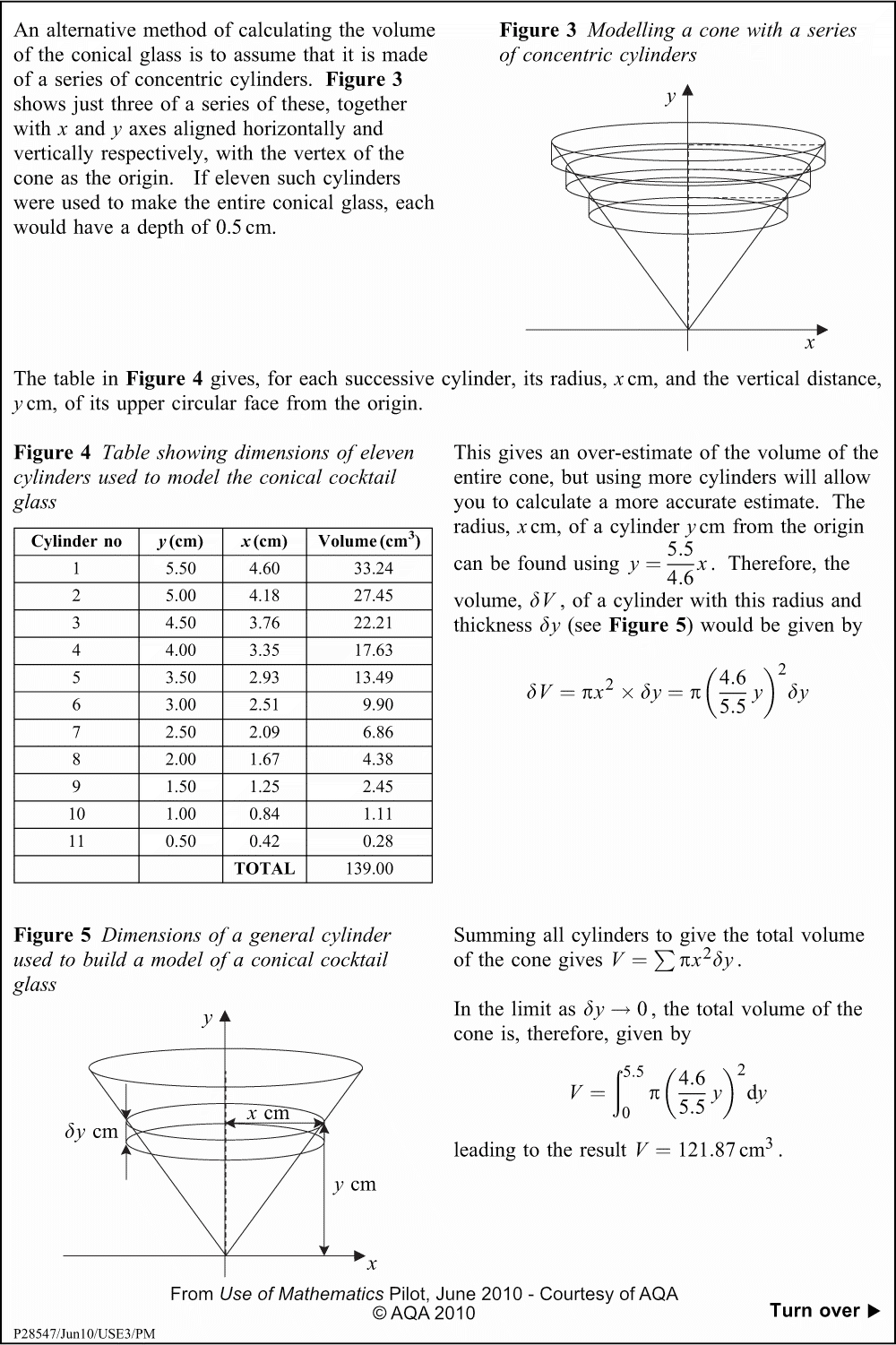
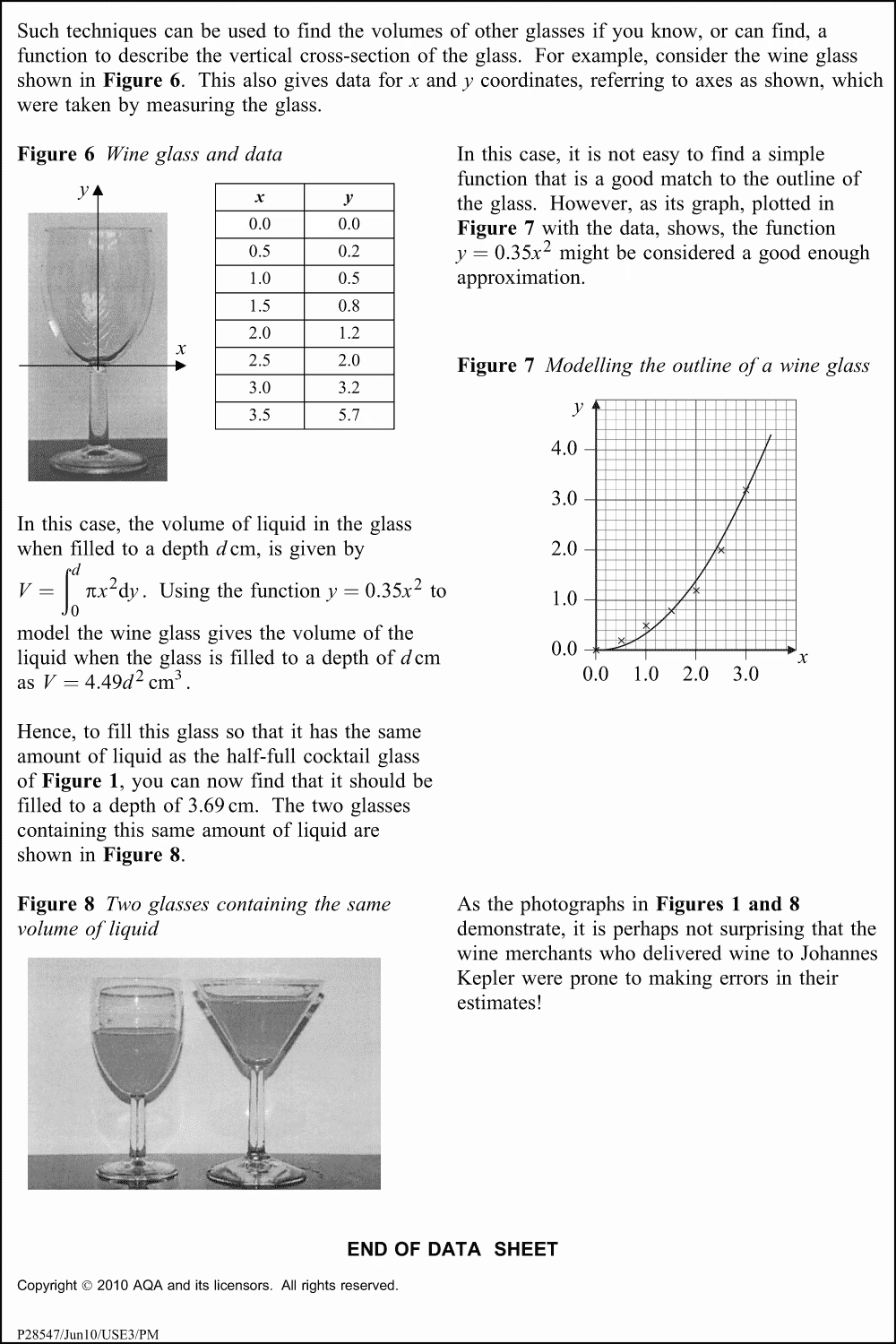
Enlarge…
Link to full version (PDF)The question paper presented students with a sequence of tasks. These started with the simple application of the modern formula for volume of a cone and progressing through increasingly challenging tasks including evaluating the accuracy of the various estimation techniques and finally estimating the volume of a traditional wine glass.
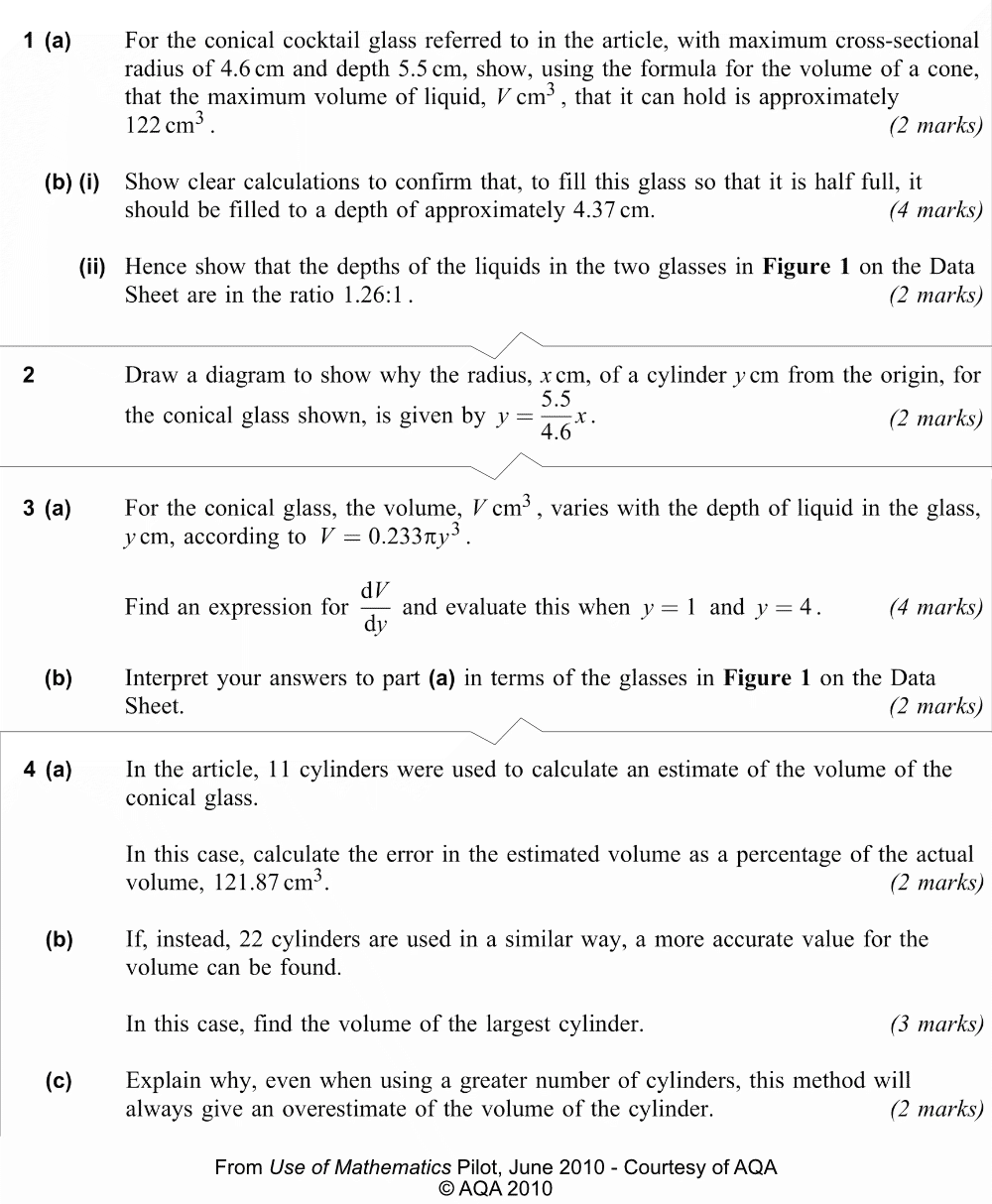
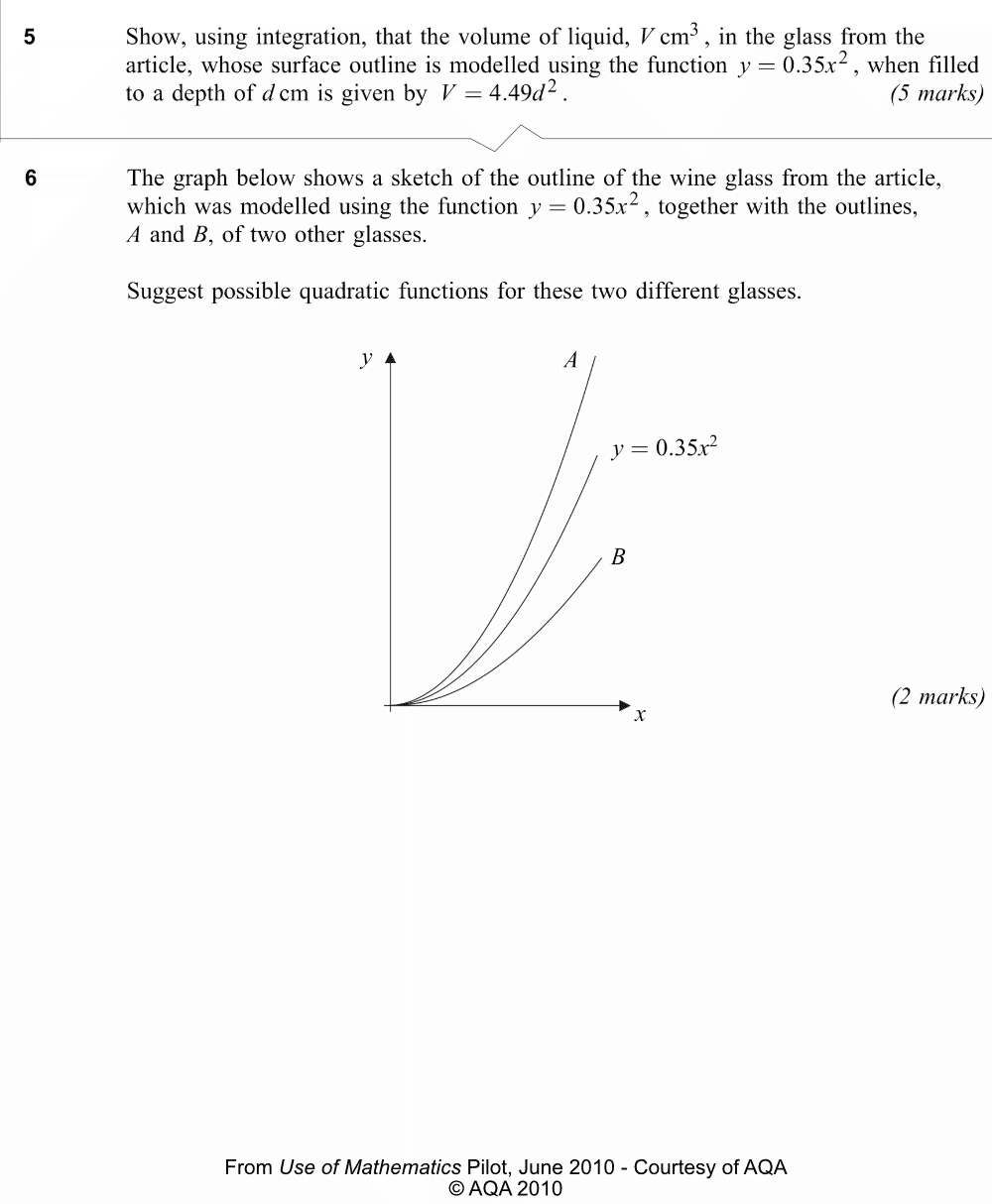
Enlarge…
Link to full paper (PDF)Linked materials © AQA 2010
Thanks to AQA for permission to reproduce these
materials here – please do not distribute further.
Links to materials:
AQA ‘Use of Mathematics’ pilot June 2010
- Advance reading material
- https://educationaldesigner.org/ed/volume4/issue13/article53/links/materials/aqa/aqa_prelim_full.pdf
- Test Paper
- https://educationaldesigner.org/ed/volume4/issue13/article53/links/materials/aqa/aqa_prelim_full.pdf